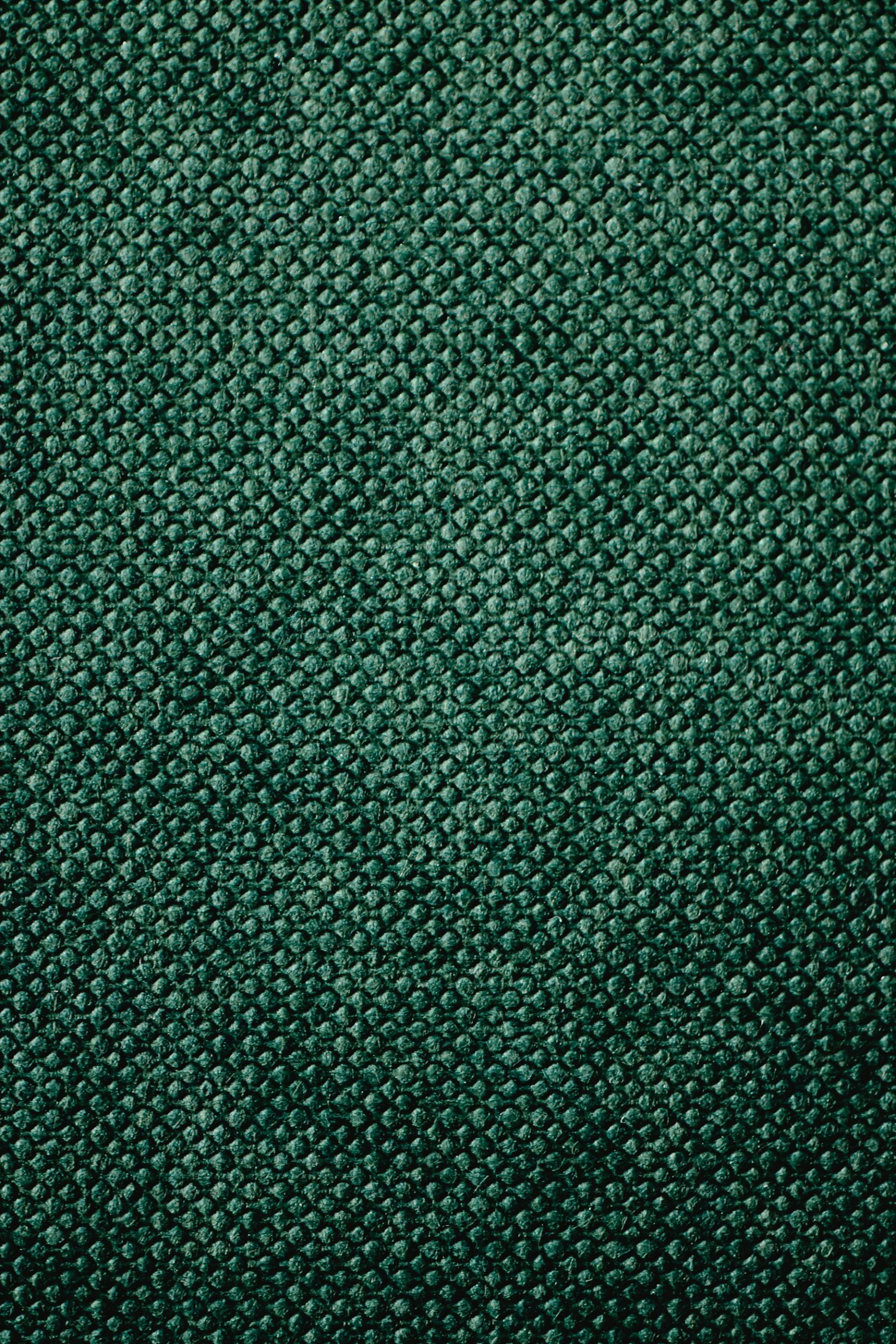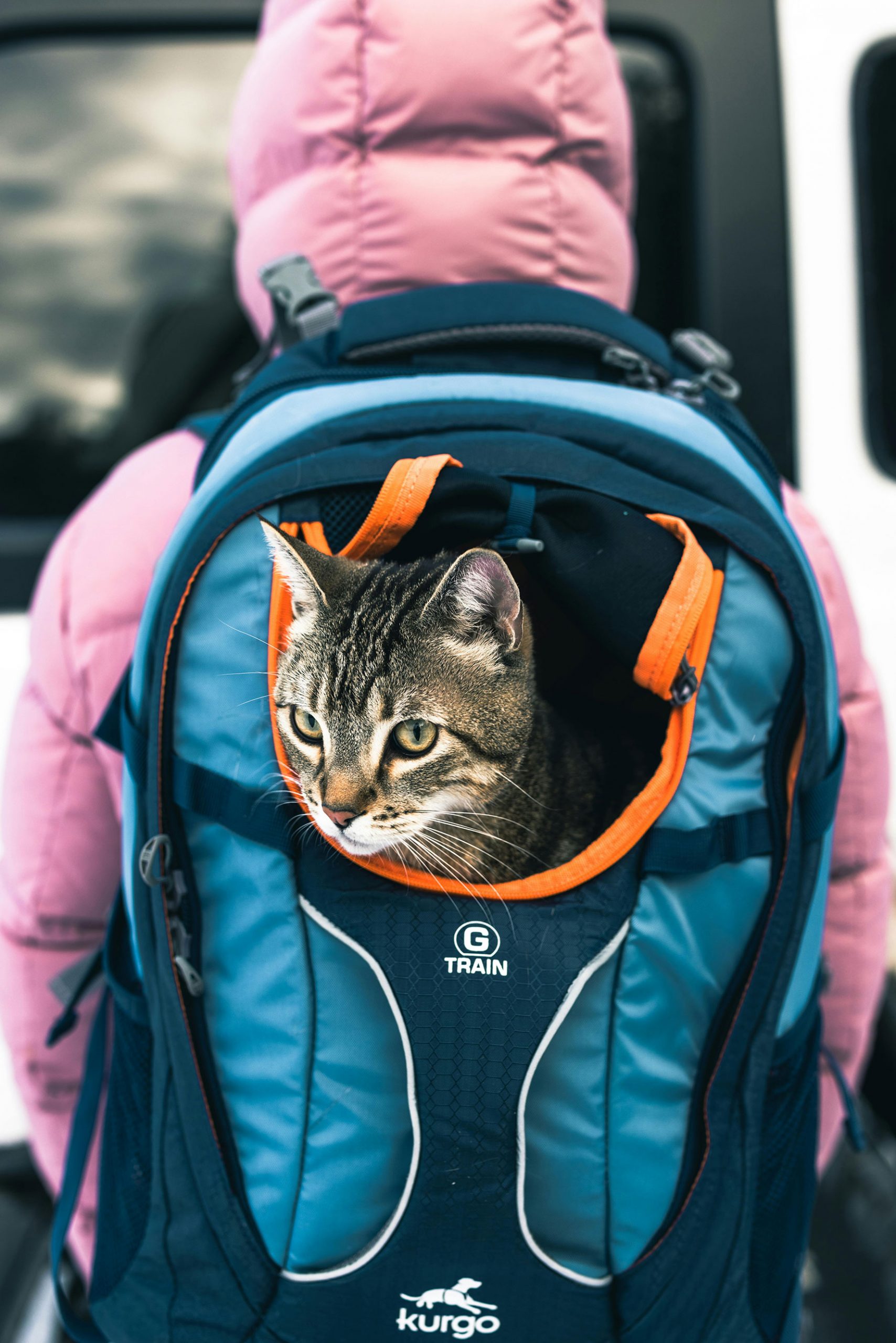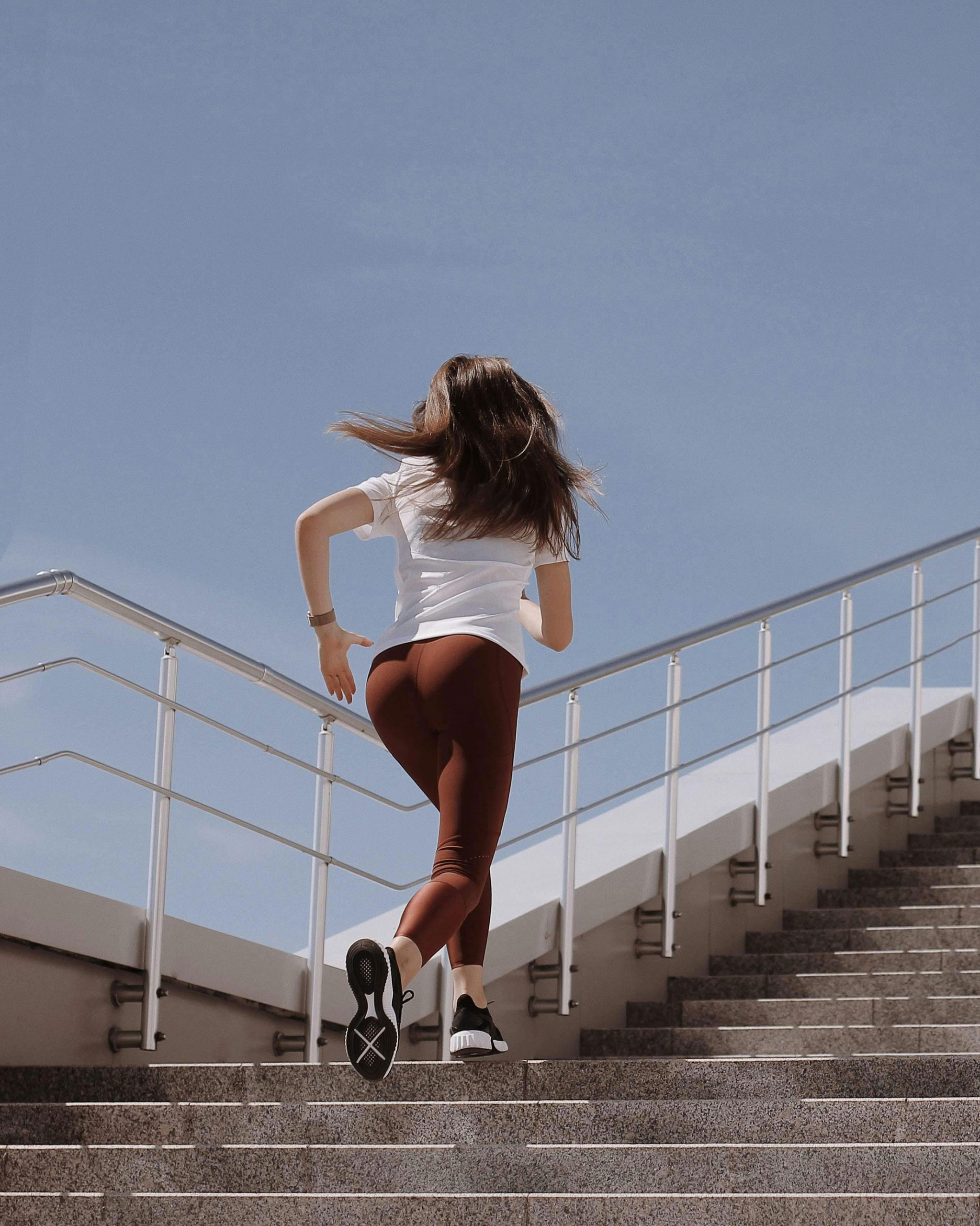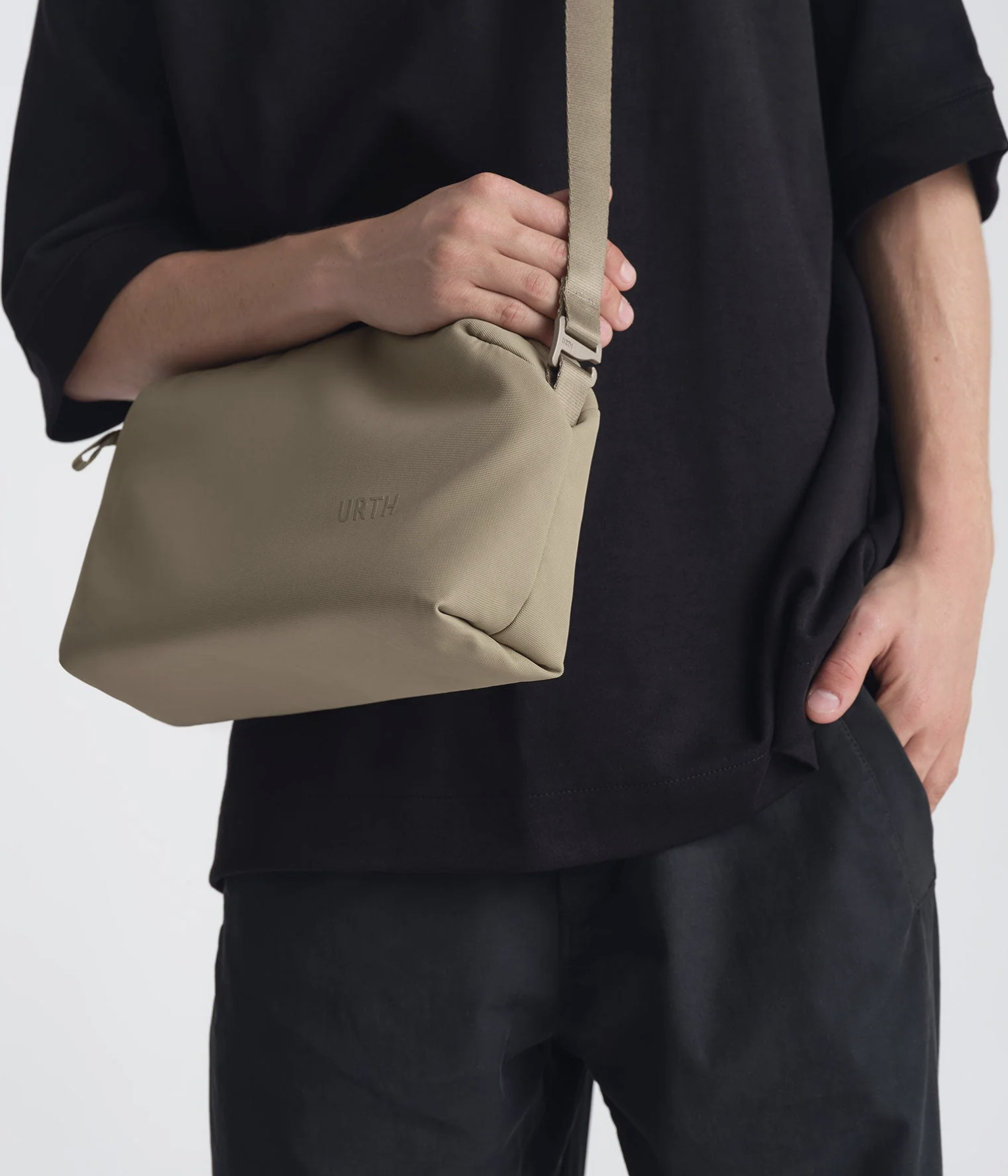Intro: Your Backpack’s Base
A backpack is more than just a bag. It’s a mix of stuff made to keep your things safe and handle all kinds of weather. What it’s made of matters a lot. It can be the difference between a pack that lasts years and one that fails when you need it.
Whether you want something light like Dyneema for hiking, tough like ballistic nylon for rough stuff, or earth-friendly like recycled stuff or hemp, know your backpack’s materials.
This guide covers 20 top backpack materials. We’ll go from the basics to the high-tech stuff that’s changing how we carry things.
Why Materials Are Super Important
Before the list, here’s why material choice is key:
Weight: Lighter materials make the pack lighter, great for long hikes or everyday use.
Weather: Water-resistant or waterproof stuff keeps your gear dry when it’s wet out.
Lasting: Good materials resist rips and sun damage for years.
Comfort: How thick, bendy, and breathable a material is affects comfort.
Earth Impact: Good materials cut down on waste.
Cost: Better materials cost more upfront, but usually last longer.
Top 20 Backpack Materials: Ranked
1. Dyneema Composite Fabric (DCF) – The Lightweight Champ
Weight: About 1.43 oz per square yard
Strength: Resists tears and punctures
Water Stuff: Totally waterproof if the seams are taped
Dyneema is popular with people who make light backpacks and tents. It’s light, strong and water-resistant, perfect if you want to keep your pack light for that outdoor trip.
Dyneema is super high-tech. It was made for sailing and is super strong for its weight -fifteen times stronger than steel- It makes really strong, light packs.
Why It’s Good:
- Super light and waterproof
- Really tear and puncture-resistant
- Doesn’t stretch, so the pack keeps its shape
- It can stand up to sun and chemicals
- Can be recycled
Good For: Super light backpacking, long hikes, climbing, bike trips
Who Uses It: Hyperlite Mountain Gear, Zpacks, Gossamer Gear, Superior Wilderness Designs, Patagonia, Arc’teryx, Black Diamond
2. X-Pac Laminate – The All-Around Star
Weight: 3.6 to 8.4 oz per square yard
Strength: Very stable
Water Stuff: Waterproof build
X-Pac is liked by gear makers because it’s good for saving weight. It has a waterproof layer and a diamond pattern that stops tears while staying flexible.
Made Of:
- Outer fabric (like Cordura, polyester, or nylon)
- Waterproof layer
- Diamond pattern
- Inside layer
Good Stuff:
- Waterproof without a coating that can wear off
- Many colors and weights
- Stops tears
- Lasts long in tough spots
Good For: Daypacks, travel packs, city bags, climbing packs
Who Uses It: Patagonia, Peak Design, Chrome Industries, Mission Workshop, Topo Designs, REI Co-op
3. Cordura Nylon – The Tough One
Weight: 6-12 oz per square yard
Strength: Resists scrapes
Water Stuff: Some are water-resistant
Cordura is a well-known, tough material developed and made popular . It’s super resistant to scrapes, way more than regular nylon.
Types of Cordura:
- Classic Cordura: The usual, strong stuff
- Cordura AFT: Lighter but still strong
- Cordura Re/Cor: Made from recycled materials
- Cordura TechTwill: Looks nicer
What Makes It Good:
- Resists scrapes like crazy
- Hard to tear
- Stays bendy
- Used by the military and in stores
- Many weights and styles
Good For: Military packs, hiking packs, work bags, laptop packs
Who Uses It: The North Face, Osprey, JanSport, Mystery Ranch, 5.11 Tactical, Maxpedition, Kelty, Deuter
4. Ballistic Nylon – Armor-Level Protection
Weight: 10-16 oz per square yard
Strength: Was made for body armor
Water Stuff: It repels water
Ballistic nylon is for when you need the toughest fabric. It’s thick nylon that’s hard to wreck.
History:
It was first made in World War II for flak jackets, then used for bags needing max toughness.
How It Works:
- Super resistant to cuts
- Edges don’t tear easily
- Keeps its shape
- Looks good even though it’s rugged
- Lasts long
Good For: Business packs, travel bags, laptop protection, city bags
Who Uses It: Tumi, Briggs & Riley, Travelpro, Samsonite, SwissGear, Victorinox, Kenneth Cole
5. Ripstop Nylon – Tear-Stopping Tech
Weight: 1.2-4 oz per square yard
Strength: Stops tears from spreading
Water Stuff: Often has a water-repellent coating
Ripstop has thicker threads in a grid pattern. If there’s a tear, it won’t spread.
How It Works:
It uses light threads with heavier threads spaced out. This makes a light material that stays strong if damaged.
Types:
- 15D Ripstop: Super light
- 20D Ripstop: Good weight and toughness
- 30D Ripstop: Usual weight
- 40D Ripstop: Heavy-duty
Good For: Light backpacking, packable daypacks, stuff sacks, rain covers
Who Uses It: Sea to Summit, Matador, Eagle Creek, REI Co-op, Patagonia, Arc’teryx, Big Agnes
6. Canvas (Cotton Duck) – The Old-School Pick
Weight: 8-24 oz per square yard
Strength: Lasts long if cared for
Water Stuff: Repels water when tightly woven
Canvas is where backpacking started. It’s been used for over a century. It gets better with age and is harder to puncture than synthetic stuff.
Classic Build:
Tightly woven cotton expands when wet, making it water-resistant. It lets air in and resists punctures.
Modern Canvas:
- Waxed Canvas: Waxed for water resistance
- Cotton-Poly Blends: Mixes canvas with synthetic stuff
- Organic Canvas: Earth-friendly
- Treated Canvas: Modern stuff to make it work better
Good For: Old-style packs, bushcraft bags, vintage stuff
Who Uses It: L.L.Bean, Filson, Frost River, Duluth Pack, Carhartt, Herschel Supply Co., Fjällräven
7. VX-series Fabrics – Military-Grade
Weight: 3.5-7 oz per square yard
Strength: Made to military standards
Water Stuff: Waterproof
VX fabrics are made for the military. They have three layers that work in the worst conditions.
Types of VX:
- VX07: Super light
- VX21: Usual weight
- VX42: Heavy-duty
- VX03: Light
How it’s built:
Each VX fabric has three layers picked to perform well.
Good For: Military packs, climbing bags, travel gear
Who Uses It: Mystery Ranch, Arc’teryx, Patagonia, TAD Gear, First Spear, LBT Inc.
8. Recycled Polyester (rPET) – The Earth-Friendly One
Weight: 2-8 oz per square yard
Strength: Like regular polyester
Water Stuff: Works well with coatings
Recycled polyester is gaining steam because it’s earth-friendly. It works like regular polyester while cutting down on waste.
Why It’s Good for the Earth:
- Uses plastic from landfills and oceans
- Uses less oil than regular polyester
- Uses less energy to make
- Can be recycled
- Supports recycling
Performance:
It’s as strong, tough, and water-resistant as the regular material.
Who’s Big on It: Patagonia, REI Co-op, The North Face, Arc’teryx
Who Uses It: Patagonia, REI Co-op, The North Face, Osprey, JanSport, Herschel Supply Co., Everlane
9. Polypropylene (PP) – The Lightweight Expert
Weight: 2-6 oz per square yard
Strength: Strong for its weight
Water Stuff: Naturally water-repellent
Polypropylene is light which is helpful for backpacks. It floats on water and resists chemicals.
Good Points:
- Light
- Wicks away moisture
- Resists chemicals
- Resists scrapes
- Doesn’t stain easily
How It’s Used:
It’s good for pack liners and stuff sacks where saving weight is key.
Who Uses It: Zpacks, Hyperlite Mountain Gear, Sea to Summit, Granite Gear, ULA Equipment
10. Polyethylene (PE) Grid Fabrics – Strong Base
Weight: 1-4 oz per square yard
Strength: Nice for its weight
Water Stuff: Depends on how it’s built
Polyethylene grid fabrics use similar stuff to Dyneema. It’s crazy strong for its weight.
How It’s Used:
- Adds strength to other materials
- Light pack frames
- Strong straps
- Cut-resistant stuff
Who Uses It: Zpacks, Hyperlite Mountain Gear, Superior Wilderness Designs, Mountain Laurel Designs
11. Kevlar Composites – Puncture-Proof
Weight: 4-8 oz per square yard
Strength: Resists punctures and cuts
Water Stuff: Needs coatings
Kevlar is known for body armor. It’s used in backpacks to stop punctures.
How It’s Used:
- Cut-resistant in security bags
- Adds strength to spots that wear fast
- Keeps sharp tools from cutting through
- Makes things super strong
Who Uses It: Pacsafe, LockSAF, 5.11 Tactical, Mystery Ranch, Maxpedition
12. Hemp Fabric – The Eco-Friendly Pick
Weight: 6-12 oz per square yard
Strength: Gets better with age
Water Stuff: Naturally repels water
Hemp is a great earth-friendly option. It gets stronger over time and has antimicrobial properties.
Good for the Earth:
- Grows fast without much water
- Bugs don’t bother it, so no pesticides
- Good for the soil
- Breaks down later
- Good for communities
How it Works:
Modern hemp is soft and comfy while staying tough and earth-friendly.
Who Uses It: Patagonia, REI Co-op, Fjällräven, Doughnut, Thinking Mu, Hemp Hoodlamb
13. Tyvek – The Paper Alternative
Weight: 1.5-3 oz per square yard
Strength: Surprisingly tough
Water Stuff: Waterproof
Tyvek feels like paper but is a durable synthetic.
Special Points:
- Waterproof but lets air in
- Resists tears
- Resists UV rays
- Looks unique
- Prints well
How It’s Used:
Good for rain covers and stuff sacks where its special points are helpful.
Who Uses It: Zpacks, Hyperlite Mountain Gear, Six Moon Designs, Gossamer Gear, ULA Equipment
14. Waxed Cotton – The Classic
Weight: 8-16 oz per square yard
Strength: Lasts long
Water Stuff: Works well if cared for
Waxed cotton mixes the old-school canvas look with wax for weather protection. It gets character with age.
How it’s Made:
Wax is added to tightly woven cotton. The wax fills gaps but stays bendy, making it waterproof. It needs to be re-waxed as needed.
Why People Like It:
It can be fixed, looks cool as it ages, and is tied to outdoor history.
Who Uses It: Filson, L.L.Bean, Barbour, Frost River, Bradley Mountain, Billingham, Chapman Bags
15. Carbon Fiber Composites – High-Tech
Weight: 3-6 oz per square yard
Strength: Super stiff
Water Stuff: Depends on the resin used
Carbon fiber brings aerospace-grade stuff to backpacks. It’s used when strength and stiffness are needed.
How It’s Used:
- Pack frames
- Strong panels
- Reinforces spots that get stress
- Protects laptops
Who Uses It: Arc’teryx, Mystery Ranch, Gregory, Osprey, The North Face
16. Ultra-High Molecular Weight Polyethylene (UHMWPE) – The Chemical Expert
Weight: 2-5 oz per square yard
Strength: Best strength-to-weight
Water Stuff: Water-repellent
UHMWPE has the best fiber strength. It’s used for high-end backpacks.
Good Points:
- Best strength-to-weight
- Resists chemicals and UV rays
- Floats
- Resists cuts
- Works in extreme temps
Who Uses It: Hyperlite Mountain Gear, Zpacks, Superior Wilderness Designs, Mountain Laurel Designs, Gossamer Gear
17. Spectra Fabric – The American Pick
Weight: 2-4 oz per square yard
Strength: Like Dyneema
Water Stuff: Works well if built right
Spectra is America’s version of Dyneema. It uses similar stuff to make high-performance fabrics.
Tech Points:
Both use UHMWPE fibers.
Who Uses It: Allied Feather & Down, Patagonia, Black Diamond
18. Aramid Blends – The Balanced Choice
Weight: 4-7 oz per square yard
Strength: Resists punctures and tears
Water Stuff: Depends on the blend
Aramid blends mix Kevlar with other stuff to balance performance with cost.
Good Points:
- Cheaper than pure aramid
- Easier to work with
- Balanced
- Good for specific uses
Who Uses It: 5.11 Tactical, Maxpedition, Mystery Ranch, TAD Gear
19. Polyester Canvas – The Synthetic Classic
Weight: 6-12 oz per square yard
Strength: Good and easy to care for
Water Stuff: Works with modern stuff
Polyester canvas is like cotton canvas but is easy to care for and resists mold.
Why It’s Good:
- Doesn’t shrink
- Resists mold
- Keeps color longer
- Easy to clean
- Works well when wet
Who Uses It: Herschel Supply Co., JanSport, Eastpak, Vans, Dakine, Burton
20. Advanced Nylon Blends – Next-Gen
Weight: 3-8 oz per square yard
Strength: Made for specific uses
Water Stuff: Works with treatments
These nylon blends use new tech to push performance.
Innovation:
- Better UV resistance
- More resistance to scrapes
- Better color
- Antimicrobial
- Better strength-to-weight
Who Uses It: Arc’teryx, Patagonia, The North Face, Osprey, Gregory, Deuter
Picking the Right Fabric
For Light Backpacking
Main Pick: Dyneema
Other: Ultra fabric or light X-Pac
Key: Every bit counts, so prioritize strength-to-weight
Packs to Check Out:
- Hyperlite Mountain Gear Southwest Series
- Zpacks Arc series backpacks
- Gossamer Gear Mariposa Plus
For Tough Use
Main Pick: Cordura Nylon (500D-1000D)
Other: Ballistic Nylon for max toughness
Key: Resisting scrapes and lasting long
Packs to Check Out:
- Mystery Ranch backpacks with Cordura
- Kelty tactical packs
- 5.11 Tactical series
For Earth-Friendly Picks
Main Pick: Recycled Polyester (rPET)
Other: Hemp or organic cotton
Key: Good for the earth without losing performance
Packs to Check Out:
For City and Travel
Main Pick: X-Pac or nice nylon blends
Other: Polyester canvas for style
Key: Weather-resistant, looks good, and works for everything
Understanding Fabric Numbers
Denier
Denier measures fiber thickness. Higher = Thicker Numbers:
- 15-30D: Super Light
- 40-70D: Outdoor Use
- 210-420D: Heavy-duty
- 500-1000D: Max Toughness
Waterproof vs. Water-Resistant
Waterproof: No water gets through (DCF, X-Pac)
Water-Resistant: Resists water but not forever (DWR fabrics)
Water-Repellent: Water rolls off
Airflow
Waterproof stuff traps moisture. Breathable stuff lets vapor out. Think about your climate when picking.
Care Tips
Synthetic (Nylon, Polyester)
- Wash in cold water
- No fabric softener
- Air dry
- Add DWR coating as needed
Natural (Canvas, Hemp)
- Wash by hand or gently
- Use detergents for natural stuff
- Air dry
- Re-wax waxed stuff
High-Tech (DCF, X-Pac)
- Wash by hand with gentle soap
- No fabric softener
- Air dry only
- Fix rips ASAP with tape
What’s Next?
New Tech
Bio-Stuff: From plants
Smart Fabrics: With sensors
Self-Healing: Fixes itself
Changes: Adjusts to weather
Focus on Earth
The industry is working on:
- Better recycling
- Plant-based stuff
- Less waste
- Planning for recycling
How to Pick
1: What’s it For?
- Light Backpacking: Save weight
- Work: Tough
- City: Style, weather, function
- Outdoor: Versatile
2: Budget
- High: Best Materials
- Mid: Good stuff
- Low: Basic
3: Earth?
- High: Recycled or plant-based
- Mid: Long-lasting
- Low: Just performance
4: Long Term?
- Often: Best stuff
- Sometimes: Mid-range
- Special: Pick whats optimized
Last Word
Backpack materials are diverse. Knowing what makes the materials tick helps you pick the right pack.
There’s no best material, just the best for you.
As science grow, we’ll see even better things that makes our trips better, more comfy, and good for the earth.
The best pack material is the one that fits your needs and helps with your trips.
Good luck choosing!
Shopping Links:
- Patagonia Recycled Material Backpacks at REI
- REI Co-op Sustainable Backpack Collection
- Hyperlite Mountain Gear Dyneema Packs
- Mystery Ranch Cordura Backpacks
#BackpackMaterials #Dyneema #Cordura #XPac #OutdoorGear #BackpackTechnology #UltralightBackpacking #SustainableGear #BackpackFabrics #TechnicalFabrics #OutdoorEquipment #BackpackDesign #MaterialScience #HikingGear #TravelGear #TacticalGear #BackpackEngineering #FabricTechnology #OutdoorInnovation #AdventureGear #BackpackConstruction #PerformanceFabrics #EcoFriendlyGear #BackpackMaterials2025



